IN A HURRY? CHECK OUT Lenovo Legion Y7000 TOP PROS:
The most challenging thing about bringing VR into your home is choosing the right hardware.
Buying a capable gaming desktop is the most popular way of powering your VR setup.
However, not everyone has enough space to house a desktop rig, or simply doesn’t want one.
If you want to move your VR setup from room to room, or even take it on the go, your only option is getting a VR-ready laptop. This means you’ll have to venture down the rabbit hole of high-end laptops that seemingly sport the same hardware but offer different features, and come at various price points.
To help you find your way out of this proverbial rabbit-hole, we’ve prepared this article that’ll help get you up to speed with what you need to consider when buying a VR-ready laptop followed by my list of the best VR laptops you can currently buy.
CONTENTS:
| IMAGE | PRODUCT | DETAILS | |
|---|---|---|---|
 |
Our #1 Choice
Lenovo Legion Y7000 |
|
Check on Amazon |
 |
Acer Predator Helios 300 |
|
Check on Amazon |
 |
MSI GS65 Stealth |
|
Check on Amazon |
Before You Buy: What To Consider When Buying A VR Ready Laptop
Today’s market is over-saturated with various gaming laptops packed with high-end hardware. Unfortunately, not all offer the best price to performance, and you can quickly end up buying a machine that’s a bit over-capable.
What do we mean by over-capable? Well, you can get a machine that’s simply overpowered. If money is not an issue for you, feel free to go for the most expensive option. But, if you don’t want to burn a hole in your wallet, you should consider a few things before setting out and buying a VR laptop.
So, let’s go over the most important thing first, the GPU.
It’s All About GPU Horsepower
When it comes to VR gaming on a computer, there are two well-known trendsetters – Oculus Rift and HTC Vive. Most other VR headset manufacturers copy their hardware requirements.
A cursory glance at these hardware requirements will tell you that you don’t need a top-of-the-line CPU. Instead, the GPU is the one that represents the greatest barrier to entry. Unfortunately, very few laptops, excluding mobile workstations, have a video card that is powerful enough to handle VR.
When Oculus and HTC launched their latest VR headsets, both companies recommended either an Nvidia’s GeForce GTX 1060 or an AMD’s Radeon 480 for the best VR experience. Oculus later added a less powerful GTX 1050 GTI and RX 470 in their minimum hardware requirements, which are marginally less expensive than recommended GPUs.
A few months back, a new generation of video cards hit the market. Namely, the high-end RTX 2060 and mid-range GTX 1660 Ti. However, Oculus and HTC haven’t changed their hardware requirements. This means you can still have a smooth gaming experience even if you buy a laptop that features an older generation GPU.
To summarize, you won’t make a mistake if you purchase a laptop that sports a video card from the previous generation. But, if you get a model with the latest generation GPU, you’ll be ensuring your machine will be able to handle future AAA game titles without breaking a sweat.
How Much Will It Cost You
Prices of gaming laptops vary greatly depending on the GPU, CPU, storage, and other features. You can end up spending anywhere from 900 to 4.000 dollars on a VR-ready laptop, so there’s something for nearly every budget.
The GTX 1660 Ti represents a budget-friendly option, and because it’s relatively new, it’ll be included in an increasing number of midrange VR-ready laptops. A laptop with this video card will cost you around a thousand dollars.
The GTX 1060 was a popular video card in mid-range VR-laptops last year. A computer with a GTX 1060 will set you back anywhere from 900 to 1.800 dollars. These machines are still popular among professionals and enthusiasts because 1060 is still a formidable GPU powerhouse. You should keep in mind that these machines are slowly phasing out from the market, which means less support.
Machines sporting the high-end RTX 2060 will burn a hole through your wallet and through the ground. A VR-ready laptop that sports this GPU cost you around 2000 dollars. With a machine like this, you can rest assured that you won’t experience a single frame drop until next-generation GPUs hit the market.
CPU and Memory
Besides a powerful video card, a VR-ready laptop also needs a competent CPU, so there are no bottleneck issues. As CPUs go, even the demanding Oculus Rift requires a (now outdated) Intel Core i5-4590 or an AMD Ryzen 5 1500x. Although these are older generation CPUs, you will be hard-put to find a current-generation VR-ready laptop that doesn’t have an equivalent or better CPU.
For the best VR experience, you need at least 8 GB of RAM. This is the easiest requirement to beat since most current gaming laptops come with at least 8 GB of RAM, and plenty come with 16 GB.
In summary, you won’t have to go out of your way to find a VR-laptop that has enough RAM and a sufficient processor if you stick to current-generation models.
Ports
One aspect you’ll have to pay close attention to is the selection of ports the laptop has. You need to get a machine which has all the necessary ports for your VR headset’s connectors.
The Oculus rift requires one HDMI 1.3 port for video output, two USB 3.0 ports, and one USB 2.0 port. On the other hand, the HTC Vive requires either an HDMI 1.4 or DisplayPort 1.2 for video output, and one USB port.
Depending on which headset you’re interested in buying, pay close attention to the number and type of ports a laptop has. If you find a model that has an excess of ports, you can chalk that as a win because you’ll be able to keep other peripherals plugged in alongside the headset without having to swap cables.
Display Size and Style
Once you’ve found a laptop that meets hardware requirements, you are left with a question of screen size. Most gaming laptops offer two screen sizes, 15 and 17 inches. Of course, you’ll be spending the majority of the game time wearing a headset and not looking at the screen. The screen size you chose has to depend mainly on how you’ll be using the laptop when not wearing a VR headset.
The same goes for the overall design of the unit. Some gaming laptops are more portable than others, which may or may not matter to you. If you’re the type of person who takes their laptop everywhere they go, you should consider buying a slimmer 15-inch screen laptop. These types of machines usually don’t have a lot of ports, so look for one that has ones that are relevant to your VR headset.
If it will, however, mostly stay put on your desk, then a 17-inch model is a good option for you. Just keep in mind that these types of laptops tend to be not only more expensive but also quite heavy. They are getting lighter though, with some model weighs as little as 6 pounds.
Memory And Battery
This will be quite a short section. Most gaming laptops come with a battery that will last you between 2 and 4 hours, depending on the workload. Don’t expect more than two hours of VR gameplay before the battery dies. So, don’t get too concerned about it, just make sure there are replacement batteries available because you’ll have to change it at least once.
When it comes to memory, most gaming laptops come with a 1 TB hard drive and a 256GB or 512GB SSD. This is more than enough memory for all your games, music, movies, and other files you plan keeping on your laptop. If you were to opt for a model that has less storage than others, you could keep most-used games installed and rotate others out.
Top 5 Best VR Gaming Laptops
Now that we’ve shown you what you should consider when buying a VR-ready, you can take a look at our top list of best models you should consider buying.
So, let’s jump right into it!
1. Lenovo Legion Y7000
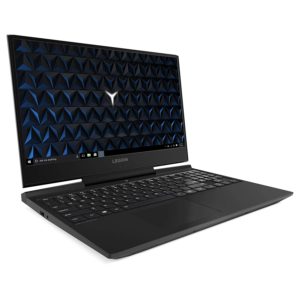
Lenovo is a well known for their almost indestructible, blocky, but capable Thinkpad laptop series that are mostly intended for business users. However, this company also manufactures excellent gaming machines. The Legion Y7000 is no exception, and at its current price point offers the best performance per dollar.
Let’s talk design first. This laptop features a sleek and discreet design. One thing I hate about gaming laptops is how flashy they are. Not everything deserves RGB lighting, especially the back of the screen and ports. The only thing that has RGB lighting on the Y7000 is the keyboard. This the only part of the computer that has some benefit from RGB lighting is the keyboard because it makes typing in the dark a breeze.
Now onto the meat of the matter, the GPU. The Y7000 features an Nvidia GeForce GTX 1060 with 6GB of VRAM. While not as powerful as the latest RTX 2060, it can still churn out 37 frames in The Rise Of The Tomb Raider on highest detail settings and 1080p resolution.
The 144Hz 15.7-inch screen is incredible. It’s surprisingly colorful and sharp, it only lacks in brightness. The display covers 153% of the sRGB spectrum, which is surprising for a model in its price range.
The CPU on this laptop is just as powerful as the video card. The 8th generation Intel Core i7-8750H CPU idles on 2.2GHz and can turbo up to 4.1GHz. When paired with 16GB of DDR4 ram, this gaming laptop can easily handle a dozen Chrome tabs playing 1080p videos with a game running in the back. Because the CPU and GPU are so powerful, they are also very power-hungry. You’ll be lucky if the battery lasts for more than two hours under even medium loads.
When it comes to ports, the Y7000 has all the essentials you’ll need for VR gaming. It comes with three USB 3.0 Type-C ports, an HDMI 2.0 port, and a Mini DisplayPort 1.4.
Pros
- Sleek design
- Incredibly Affordable
- Excellent hardware specs for VR gaming
- Superb display
Cons
- Relatively short battery life
Bottom Line
If you want to spend your money smart, then we recommend you go for the Lenovo Legion Y7000. It’s more than capable of handling VR game title while retaining a portable form factor.
2. Acer Predator Helios 300
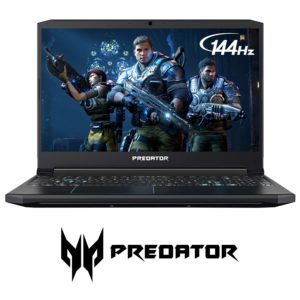
Don’t want to shell out a megaton of bucks on a gaming laptop? Look no further than Acer Predator Helios 300. This mid-range machine comes equipped with everything you need for VR gaming, as well as hardcore PC gaming.
Let’s go over the design first. The Predator looks like a sports car. The chassis is built out of mostly out of metal. Red accents on the lid and the exhaust further accentuate the sports car aesthetic. While we’re not fans of overly flashy hardware, the Predator is subtle enough not to make us feel silly when carrying it.
When it comes to the hardware components, this gaming laptop has everything you’d expect from a mid-range model. The graphics on the Predator are powered by an Nvidia GeForce GTX 1060 with 16GB of VRAM. Although it already more than capable of running the latest AAA titles in glorious 1080p, you can also overclock it to squeeze every ounce of power out of it.
The 8th generation Intel Core i7-8750H is powerful enough to handle even the most demanding of tasks. Just like with Lenovo Y7000, Predators CPU won’t throttle even if you overload it with CPU intensive tasks such as video streaming and encoding. Unfortunately, it is also power-hungry, so don’t the battery to last very long.
The 144Hz 15.6-inch screen is what you’d expect from a mid-range gaming laptop. The colors are vibrant, and the contrast is just right.
When it comes to ports, the Predator comes with all the ones you need for VR gaming. There is one HDMI 2.0 port, one Mini DisplayPort 1.4, and three 3.1 USB ports. Everything you need to connect any type of PC VR headset.
Pros
- Affordable
- Excellent display
- Hardware offers the best bang for the buck
- Partly metal chassis
Cons
- Short battery life
Bottom line
The only reason why the Predator sits in second place on this list is because of its design. Although it isn’t terribly flashy, we still felt a little bit silly when using it. Other than that, the Predator Helios 300 has all the necessary hardware to run any VR platform and game title at a reasonable price.
3. MSI GS65 Stealth
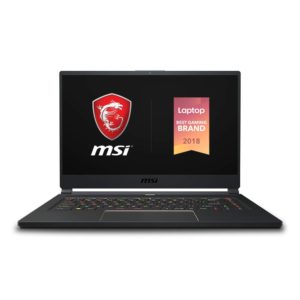
The last place on our list of best laptops for VR gaming is reserved for MSI GS65 Stealth. This machine offers premium build quality and feature set of a high-end computer with a couple of sacrifices, mostly in the video card department.
Let’s go over the design first. This laptop is incredibly sleek and classy. There are no color patterns or accents on the chassis, just a gold MSI logo on the lid. The black and gold color combination give this gaming laptop a luxe look you’re more likely to see in a business machine. The RGB backlit keyboard lacks a numerical section, but that’s expected for a 15-inch device.
When it comes to the stuff under the hood, that is where things get really interesting. The GS65 Stealth features Nvidia’s latest mid-range video card, the GTX 1660 Ti with 6GB of DDR6 RAM. While it isn’t as powerful as an RTX 2060, and also has no ray tracing capabilities, it still leaves the previous generation of Nvidia’s GPUs in the dust. You’ll have no trouble running AAA games with it, be it current ones of the ones that are still to come. You won’t have to look for an upgrade for the next couple of years, for sure.
The 2.6GHz 8th generation Intel Core i7-9750H is quite the beast. It didn’t slow down no matter how much I tried overloading it. It did slow down a bit when I ran a quick 1080p video encoding test, but the slowdown was negligible. I’m sure you won’t have any issues running even the most CPU intensive VR games.
The only thing we don’t like about this laptop is that it has quite a small storage space. The 512GB SSD it comes with has only enough space to store your OS and a couple of games. We don’t like being constricted by storage space, so we kept most of our files on an external drive while using this product.
The GS65 Stealth offers quite a selection of ports for such a thin form-factor. There three USB Type-A ports located on each side of the laptop. Furthermore, it also has one USB Type-C port with Thunderbolt 3 support, a mini DisplayPort, and an HDMI port. This means you won’t have any trouble connecting any type of VR headset.
Pros
- Sleek design
- Powerful hardware
- Great selection of ports
Cons
- There is no numerical keyboard
- Tiny storage space
- A bit pricey
Bottom Line
If it weren’t so expensive, the MSI GS65 Stealth would be on the top of the list. However, if money is not an issue for you, we wholeheartedly recommend you get one. This VR-ready laptop offers better-than-60fps gaming with the premium build quality.
Final Word
It’s time to pick a winner. And, without a doubt that’s the Lenovo Legion Y7000. Not only is this gaming laptop incredibly sleek, but it’s also powerful enough for any VR game title without breaking a sweat. It is also incredibly affordable, which is the most essential factor in our book.
What do you think about VR-ready laptops? Is there a point in breaking the bank so you can get top of the line product? Is it smarter to get a machine that has the best price to performance ratio? Let us know in the comments below!
YOU MIGHT ALSO LIKE:
Filming In A Sphere: Best 360° Cameras
SubPac M2X Wearable Physical Audio System Review
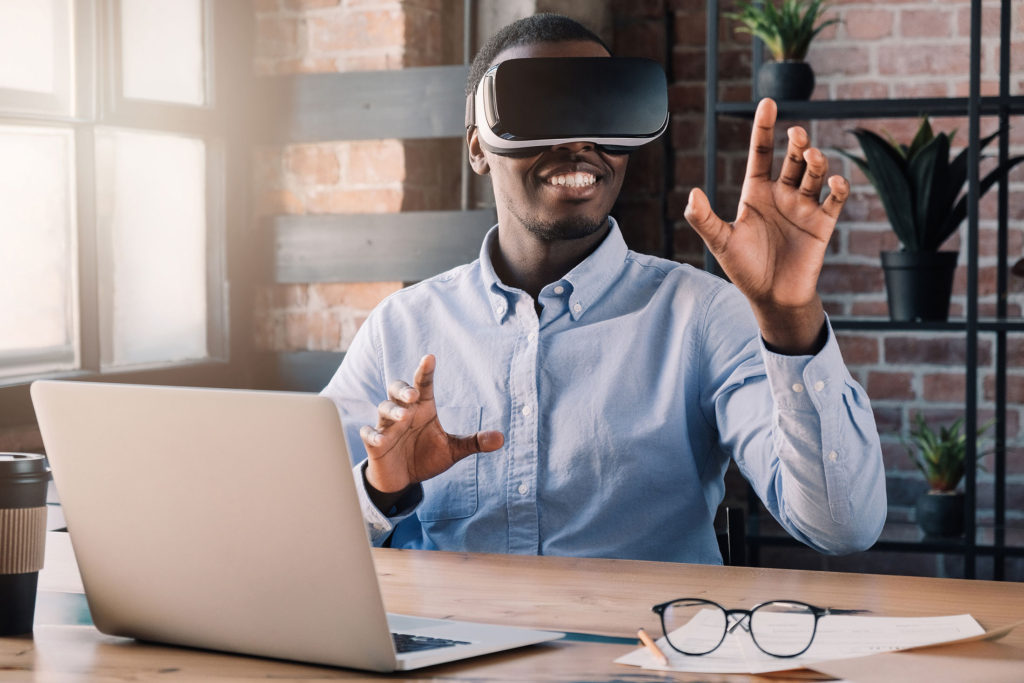
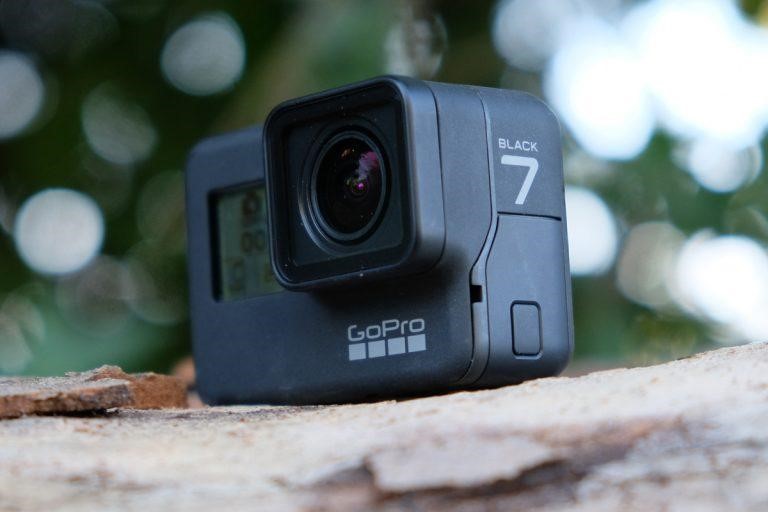


No Responses